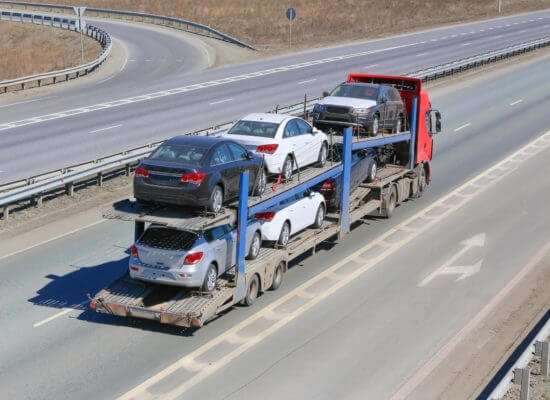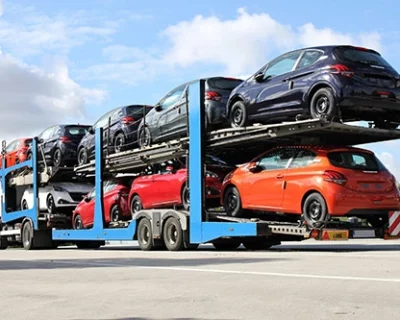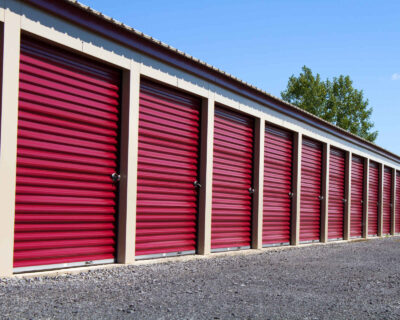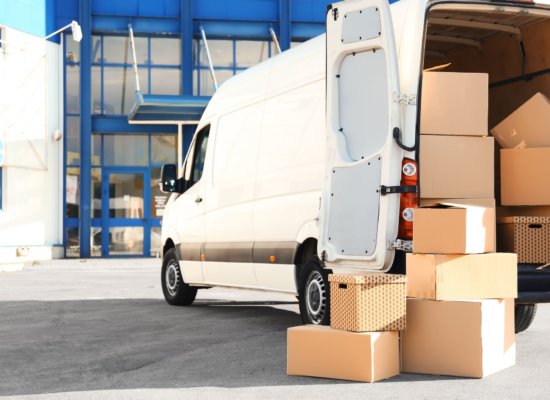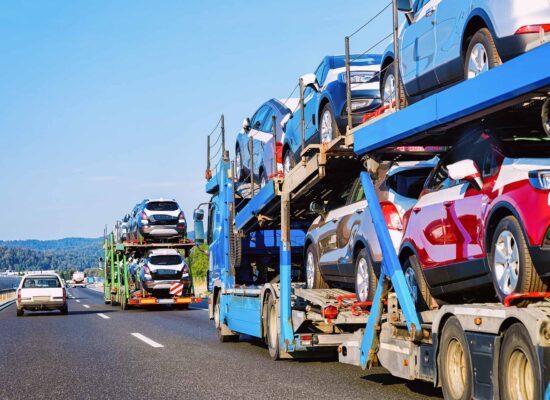How to Transport a Car From One State to Another
Transporting a car from one state to another can be a difficult task, but with the right knowledge and planning, it can be a stress-free process. Whether you’re relocating or need to move your vehicle for any other reason, understanding how to transport a car from one state to another is crucial. In this guide, we’ll explore all the car transport tips and essential steps to take.

Planning long-distance auto transport involves factors like distance and budget. Choosing a reputable service entails research and budgeting. Prepare the vehicle by inspecting and removing personal items. Select a shipping method (open or enclosed), book a service, and organize paperwork. During transit, the professionals will load and secure the vehicle, so upon arrival, inspect it, document if there’s damage, and complete the necessary paperwork.
How Do I Transport a Car from One State to Another – Planning Your Car Transport
Before embarking on the journey of state-to-state car shipping, careful planning is essential. The first step in this process is determining the specific needs and preferences for the move. Consider factors such as the distance between states, your moving budget, the timeframe for delivery, and the type of vehicle that needs to be transported.
Once you’ve outlined the requirements, it’s time to research the available shipping options and prepare a moving checklist of essential tasks. This planning stage is critical for setting the groundwork and will help in making informed decisions throughout the process of shipping the car to another state.
Start with the Most Important Thing – Choosing the Right Car Transport Service
Selecting the best car shipping company is a crucial decision that can greatly impact the success of a state-to-state move. To ensure safe and reliable auto transport, consider the following tips when choosing an auto transport service provider:
- Research and compare – start by researching different auto transport companies. Gather information on their reputation, experience, and customer reviews. Compare their services, prices, and delivery times to find the most convenient one.
- Check for licensing and insurance – check if the company is licensed and insured to operate across state lines. This provides a level of security in case of any unexpected incidents or relocation mistakes during transit.
- Request quotes – obtain quotes from multiple providers to get a better understanding of the cost involved. Be cautious of unusually low prices, as they may indicate subpar service, shipping scams, or hidden fees.
- Ask about delivery methods – inquire about the transportation methods offered, whether it’s open or enclosed carriers. The choice depends on the vehicle’s value and the level of protection you desire during transportation.
- Read the contract carefully – before finalizing the decision, thoroughly review the contract and terms of service. Pay attention to any hidden fees, cancellation policies, and delivery timeframes.
Budgeting for Your Car Transport
When it comes to budgeting, several factors come into play that can influence the overall car transport cost estimation. One of the main factors is the distance between the states of origin and destination. Higher transportation costs are usually associated with longer distances.
The type of vehicle, its size, weight, and dimensions can also affect costs, as larger or heavier vehicles may require specialized carriers and incur additional charges. Additionally, the choice between open and enclosed carriers, the urgency, and the accessibility of pickup and drop-off locations are all important factors. Seasonal demand and any additional services you may require can also impact the final price of your car transport.

How to Transport a Car From One State to Another – You Need to Prepare Your Vehicle for Transport
When it comes to preparing a car for interstate transport, there are essential steps to ensure a smooth and damage-free journey. This preparation begins with a thorough vehicle transport inspection and proper documentation.
Vehicle Inspection and Documentation
Before entrusting your vehicle to auto shipping services, conducting a comprehensive inspection and documenting its current condition is fundamental. Start by thoroughly examining your vehicle’s exterior, and checking for any scratches, dents, or paint chips.
Don’t forget to inspect the windows, mirrors, and lights. Moving to the interior, take note of the condition of the seats, dashboard, and any other components. It’s advisable to take clear photographs or videos of the entire vehicle, focusing on any pre-existing damage.
Additionally, make a written record detailing any imperfections, and ensure that both you and the driver sign off on the inspection report. This careful documentation will provide peace of mind and a reference point should any disputes arise regarding the condition of the vehicle upon delivery.
Preparing Your Car for the Journey
Preparing a vehicle for long-distance interstate transport involves more than just the inspection and documentation. You’ll want to take several steps to ensure the vehicle is in optimal condition for the journey. Start by removing all personal belongings from the car, as they can add unnecessary weight and pose a risk of damage during shipping.
Make sure the fuel level is no more than a quarter tank, as a lighter vehicle is safer to transport. Check the vehicle’s battery to ensure it’s charged, and make sure the tires are adequately inflated. If the car has any leaks, be sure to address them beforehand. Finally, if you have any special requirements or concerns regarding the vehicle, communicate them clearly with the shipping service.

Select the Best Transportation Method for Your Needs
Choosing the right transportation method is a crucial decision in the shipping process. It’s essential to consider the vehicle’s value, protection requirements, and budget. Two key factors to contemplate are the type of carrier and the pick-up and delivery options.
Choose Between Open vs. Enclosed Car Transport
One of the primary considerations when selecting a transportation method is whether to opt for open or enclosed trailers. Open transport involves placing your vehicle on an open-air trailer, exposing it to the elements and road debris during transit. This method is generally more cost-effective and suitable for standard vehicles like sedans and SUVs.
In contrast, enclosed shipping utilizes fully enclosed trailers that shield your vehicle from weather, dust, and potential damage. This method is ideal for transporting high-end, classic, or luxury cars, providing an extra layer of protection. When deciding between open and enclosed trailers, consider the value and vulnerability of the vehicle, as well as the budget, to make the best choice.
Door-to-Door vs. Terminal-to-Terminal Auto Transport
Another critical aspect to address is how you want your vehicle to be picked up and delivered. Door-to-door and terminal-to-terminal options are available. With door-to-door car transport services, the shipping company picks up the vehicle directly from a specified location and delivers it to your new home. This convenient option minimizes the hassle of arranging transportation to and from a terminal but may come at a slightly higher cost.
On the other hand, terminal-to-terminal service requires you to drop off the vehicle at a designated terminal for pick-up and retrieve it from another terminal. While this option can be more affordable, it may involve extra effort, and you’ll need to factor in additional travel to and from the terminals. Carefully weigh the convenience and cost of these options to determine which one aligns best with your preferences and logistics.

Book and Schedule the Shipping Services
Once you’ve made the important decisions regarding the transportation method and service options, the next steps involve booking the car transport service and preparing for moving day. These aspects are critical to ensuring a seamless and stress-free journey for the vehicle.
Booking Your Car Transport Service
Booking a vehicle shipping service is a straightforward yet vital part of the process. After selecting a reliable auto transport company, contact them to make a reservation. Be prepared to provide essential information, including the origin and destination addresses, preferred pickup and delivery dates, and details about the vehicle.
The shipping company will guide you through the booking process and provide booking confirmation.
This typically includes important details such as the estimated delivery window, contact information, and any special instructions.
Preparing for the Transport Day
On the moving day, make sure to review and organize your paperwork provided by the transportation company. Remove personal belongings from the vehicle, as they aren’t covered by insurance and can add unnecessary weight. Conduct a final inspection of the vehicle’s condition, documenting any changes since the initial assessment.
Ensure both you and the driver agree on the vehicle’s condition before loading it onto the carrier. Be punctual for the scheduled pickup time, hand over the keys and required paperwork to the driver, and maintain open communication throughout the process to ensure a smooth transportation experience.
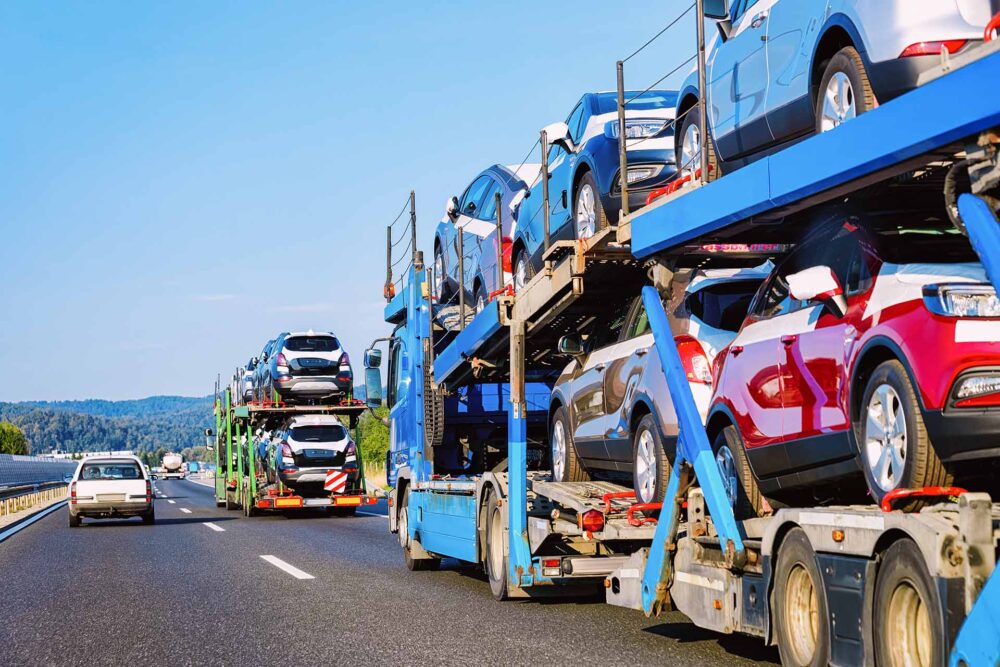
The Car Transport Process – Vehicle Loading and Transit
Once you’ve entrusted the vehicle to a reputable car transportation company, they will carefully load it onto a specialized vehicle carrier. During loading, professional technicians secure the vehicle to prevent any movement, damage, or other relocation mistakes during transit.
The vehicle will be strategically positioned on the carrier, and it may be covered for added protection during long-distance moving. Rest assured that the vehicle will be handled with the utmost care throughout its journey between states.
Auto-Transport
If your first concern is having your vehicle transported safely and efficiently, enclose shipping is the way to go.
Read moreMoving Insurance
Flat Price Moving and Auto Transport Company offers moving insurance to cover potential damages
Read moreStorage Service
Knowing what kind of surprises cross country move may hold, we offer 30 day free storage for belongings at the origin state.
Read moreThe End of the Journey – Receiving Your Car in the New State
Upon delivery to the new state, it’s essential to be present at the designated location or have an authorized representative there. As the carrier unloads your vehicle, carefully inspect it for any visible damage. Clear communication with the transport company is crucial, and documenting discrepancies helps address potential claims or issues later.
Be Thorough With the Delivery Inspection and Documentation
When the vehicle arrives, conduct a comprehensive visual inspection. Check for any visible damage and take photographs from various angles to create a visual record. Next, compare the vehicle’s current state to the condition documented before transport.
If new damage or issues are apparent, point them out to the carrier’s representative and note them on the Bill of Lading, an official document detailing your car’s condition upon delivery. Careful inspection and accurate documentation are vital for resolving disputes or claims related to the transport process.
Finalize the Transaction by Signing the Paperwork
To wrap up the transport process, focus on the car transport paperwork and final details. Review the Bill of Lading to ensure it aligns with your inspection findings regarding the vehicle’s condition. If everything looks satisfactory, proceed to sign the Bill of Lading, acknowledging the safe move of the vehicle.
Make any outstanding payments to the transport company, ensuring all financial obligations are met. Keep copies of the Bill of Lading and important documents for your records. With the paperwork completed and the car safely in your possession, consider the transport process successfully concluded.

Ensuring Smooth and Secure Car Transport Between States
Successfully transporting a car from one state to another involves a lot of planning. It’s a complicated process, but when executed with precision, it ensures a seamless journey for a vehicle.
So, if you want a smooth moving process, contact Flat Price Auto Transport and Moving company, and our long-distance movers will make sure everything goes without a hitch. From professional packing services to shipping your vehicle, our comprehensive long-distance moving services will take care of every aspect of the interstate move.
Frequently Asked Questions
How Can I Find a Reputable Car Transport Service for Transporting My Car Between States?
You can find a reputable long-distance moving company by conducting thorough research, checking online reviews, verifying licenses and insurance, and obtaining quotes from multiple providers.
What Factors Affect the Cost of Transporting a Car From One State to Another, and How Can I Budget for It?
Factors affecting the cost include distance, vehicle type, transport method, urgency, and additional services. To budget, obtain quotes, consider these factors, and plan accordingly.
What Benefits Do Open vs. Enclosed Car Transport Techniques Offer?
Open carrier transport is cost-effective and suitable for standard cars. On the other hand, enclosed carrier transport provides extra protection for high-value or delicate cars against weather and debris.
What’s the Difference Between Door-To-Door and Terminal-To-Terminal Car Transport?
Door-to-door service offers convenience by picking up and delivering a vehicle directly. Terminal-to-terminal service requires the drop-off and pick-up to be at designated terminals, often at a lower cost.
What Documents Do I Need to Prepare for Car Transport?
You’ll need documents such as proof of ownership (vehicle title), a valid driver’s license, and any paperwork provided by the cross-country movers, including the Bill of Lading and inspection reports.
